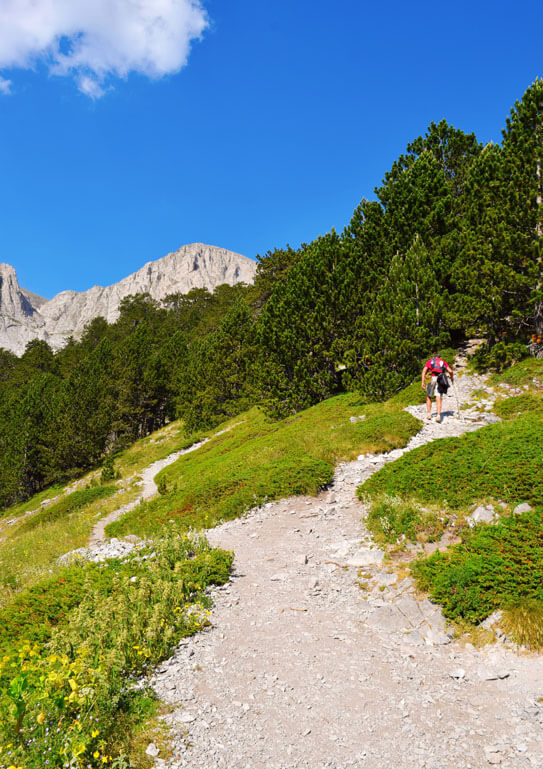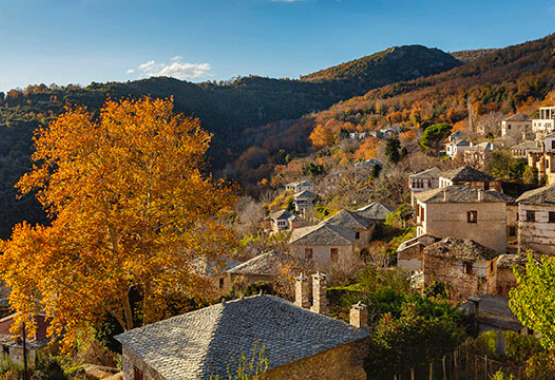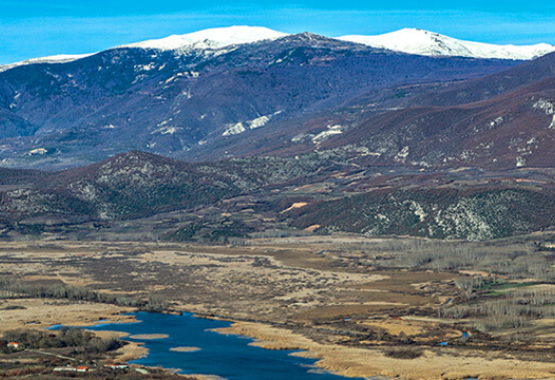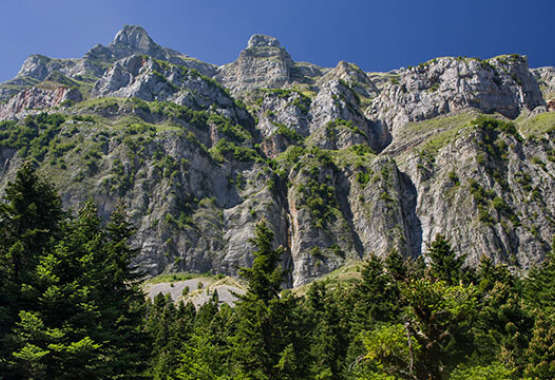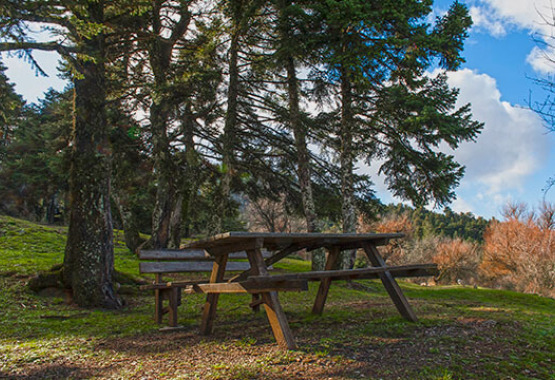
LITOCHORO
Mt. Olympus’ wonderful nature of rich flora (over 1700 species, more than 20 of which endemic) and fauna (more than 30 species of mammals, 100 species of birds, 18 species of reptiles) left the modern Greeks with no choice but to proclaim it the first National Forest in 1938. The Pinus leucodermis in this area forms the highest forest levels in Europe (2,500 m). The greatest concentration of rare plants and animals establishes the area as a true paradise for the conservation of rare flora and fauna of Greece and Europe. The area makes up the core of the National Park which was founded in 1938.
The predominance of limestone greatly influences the climate and the appearance of the vegetation. As a result of the limestone, the basic features are the deep valleys and steep slopes (Enipea Valley). The limestone makes the climate drier as well as increasing the temperature and absorbing the precipitation. The predominant forest species is Pinus leucodermis which forms mainly homogeneous clusters. Alpine valleys cover the area above the forest levels (2,500 m). There are many endemic species in which Jankaea heldreichii is included.
At 263 km from Athens and 78 from Thessaloniki (Greece’s second biggest city) the area is ideal for the lovers of alternative activities, ranging from trekking to paragliding, canyoning, rafting, climbing, mountain-biking and jeep safari. But you don’t have to go extreme to have your personal Olympian moments. Mountaineering on Olympus is not only a divine experience but also an option covering all levels of difficulty and stamina.
Mount Olympus
Mount Olympus is a mythical mountain (the home of the 12 gods of Greek mythology) with a variety of microclimates which are considered responsible for the reversion of the vegetation zones.
Mt. Olympus’ wonderful nature of rich flora (over 1700 species, more than 20 of which endemic) and fauna (more than 30 species of mammals, 100 species of birds, 18 species of reptiles) left the modern Greeks with no choice but to proclaim it the first National Forest in 1938. The Pinus leucodermis in this area forms the highest forest levels in Europe (2,500 m). The greatest concentration of rare plants and animals establishes the area as a true paradise for the conservation of rare flora and fauna of Greece and Europe. The area makes up the core of the National Park which was founded in 1938.
The predominance of limestone greatly influences the climate and the appearance of the vegetation. As a result of the limestone, the basic features are the deep valleys and steep slopes (Enipea Valley). The limestone makes the climate drier as well as increasing the temperature and absorbing the precipitation. The predominant forest species is Pinus leucodermis which forms mainly homogeneous clusters. Alpine valleys cover the area above the forest levels (2,500 m). There are many endemic species in which Jankaea heldreichii is included.
At 263 km from Athens and 78 from Thessaloniki (Greece’s second biggest city) the area is ideal for the lovers of alternative activities, ranging from trekking to paragliding, canyoning, rafting, climbing, mountain-biking and jeep safari. But you don’t have to go extreme to have your personal Olympian moments. Mountaineering on Olympus is not only a divine experience but also an option covering all levels of difficulty and stamina.

